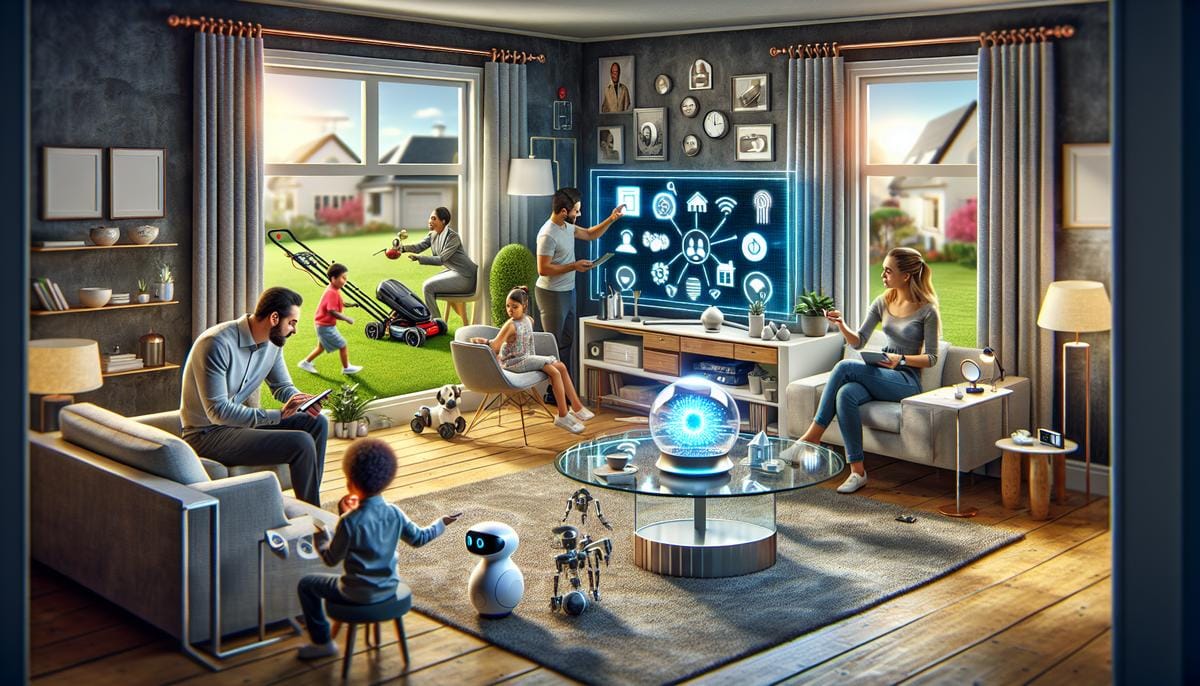The Ultimate Guide to Home Automation for Beginners

Welcome to the world of home automation, where convenience and technology meet to make your life easier and more enjoyable! Home automation might seem daunting at first, with all the choices and technical jargon, but don't worry, we're here to break it down for you. In this guide, we'll take you through the steps to get started with turning your house into a smart home. Whether you want to control your lights with your voice, adjust your thermostat from your phone, or have your house's security at your fingertips, we've got you covered. So, let’s dive in and demystify home automation together!
Understanding Home Automation
First things first, let's get to grips with what home automation actually means. In its simplest form, home automation is when technology and devices work together in your home to perform tasks automatically. Think of it as having a personal assistant that can control things like your lighting, heating, cooling, and entertainment systems without you having to lift a finger. But how does it work? Home automation systems are typically made up of a combination of hardware, communication, and electronic interfaces that work together to integrate electrical devices with one another. Smart devices are connected through Wi-Fi, allowing them to communicate with each other and with you, through your smartphone or other networked device. Usually, this is managed through a central hub or ‘gateway’, from where you can set up schedules and rules, like turning your heating on an hour before you get home. Some systems also use what’s known as the "Internet of Things" (IoT), which connects everyday objects to the internet, allowing them to send and receive data. In home automation, this means devices can perform tasks autonomously based on your habits and preferences. Let's move on to selecting the right smart devices to make this a reality.
Choosing the Right Smart Devices
Next up, choosing the right devices for your home. With so many smart devices out there, from smart bulbs to intelligent fridges, knowing which ones to invest in can feel overwhelming. The key is to start small and think about which routines you'd like to simplify or tasks you want automated. Looking to save on energy bills? Smart thermostats can regulate your home’s temperature efficiently. Hate coming home to a dark house? A smart lighting system can ensure your lights are on just as you like them when you arrive. Want to secure your home? Smart locks and security systems have you covered.When picking devices, also consider their compatibility with each other and with your smartphone or smart speakers like Google Home or Amazon Echo. Most devices will have their own apps, but for a truly cohesive home automation system, you'll want them to work seamlessly together in one ecosystem. Look for devices that support popular standards like Zigbee, Z-Wave, or Wi-Fi for easy integration. Also, check reviews and do your research to make sure you're buying reliable, user-friendly products.
Setting Up Your Smart Home Hub
Your smart home hub is like the conductor of an orchestra; it’s essential for ensuring all your smart devices work in harmony. The hub connects to your router and communicates with all your various smart gadgets, allowing you to control them from a single app or through voice commands.There are several options for a smart home hub. Some prefer dedicated hubs like Samsung SmartThings or the Wink Hub, while others opt for a smart speaker with built-in hub capabilities. The choice depends on your specific needs and the devices you plan to connect.Installation typically involves connecting the hub to your network and following the set-up instructions in the accompanying app. This will usually include adding your devices to the network, configuring settings, and syncing with other services. Some devices will require a 'skill' to be enabled for voice controllers or specific apps to be installed. Take the time to get to know your hub's app as this will be your main control panel for your smart home.
Creating Automation Routines
With your smart devices installed and hub set up, it's time to explore the magic of automation routines. These are sequences of events that happen automatically under certain conditions—like a series of dominoes falling in a line. Routines can significantly increase your convenience, as they take the manual operation out of the equation.For instance, you can create a "Good Morning" routine where the lights turn on, your favorite music starts playing, and the coffee machine begins brewing when your alarm goes off. Or a "Leaving Home" routine can ensure that all your lights turn off, the thermostat sets to an energy-saving mode, and your security system arms as soon as you lock your front door.Creating routines usually involves setting 'triggers,' like a specific time, a voice command, or an action. Using your hub's app, you can specify these triggers along with the 'actions' they should prompt. It might take a bit of trial and error to get it just right, but once you've got your routines in place, they can transform your daily life. It can be both fun and immensely satisfying to see your home respond to your needs automatically.
Securing Your Smart Home
While smart home devices offer convenience and efficiency, it's important not to overlook security. As with anything connected to the internet, smart home devices are vulnerable to hacking and other security risks. Fortunately, there are several steps you can take to protect your smart home.First, always change the default username and password on new devices, as these can often be easily guessed by cybercriminals. Create strong, unique passwords for each device, and consider using a password manager to keep track of them all. Secondly, regularly check for firmware updates for your devices. Manufacturers often release updates that patch security holes and add new features. Many devices will update automatically, but it's a good habit to manually check every so often.Another essential step is to ensure that your Wi-Fi network is secure. This includes using strong Wi-Fi passwords, enabling network encryption (WPA2 is currently the most secure), and setting up a guest network for your smart devices. This isolates them from the network your computers and mobile devices use, adding an extra layer of protection.Finally, consider additional security measures like two-factor authentication (2FA) for your devices and services, which requires a second form of verification beyond just a password to gain access. By taking these precautions, you can enjoy the benefits of a smart home without compromising your security and privacy.
Troubleshooting Common Issues
Even the most professionally installed home automation systems can encounter problems. What do you do when your smart light won't turn off, or your smart thermostat doesn't seem to be regulating the temperature properly? Start by checking for the obvious – are all devices powered and connected to the network? It may sound basic, but sometimes a device can be unplugged or a battery dies without you realizing. If everything is powered, try resetting the device in question. A simple reboot can often resolve many issues. If that doesn't work, check the device's app for any error messages or diagnostic tools. It’s also worth visiting the device manufacturer’s website, as they often have support pages with troubleshooting advice.When all else fails, remember the 'Universal Fix': turn it off and on again. Turn off your router for about 30 seconds before restarting it. This can clear out any network cobwebs and get your devices back online. As a last resort, reach out to the device's customer support for help. They will often be able to diagnose the issue or guide you through a factory reset if necessary.Remember, smart home technology is still relatively young, and some teething problems are to be expected. But with a little patience and problem-solving, you can get your system back on track.
Final Thoughts
Your journey to a smart, automated home is now well underway. By understanding what home automation is, choosing the right devices, setting up a central hub, setting up routines, securing your smart home, and learning to troubleshoot effectively, you're well-equipped to tackle the smart home world. Home automation is an ever-evolving field, with new devices and features being released regularly. Keep exploring, learning, and adapting your system to fit your needs. The most important thing is that home automation works for you, making your life more comfortable and efficient. After all, that's the ultimate goal of technology—to enhance our lives and give us more time to enjoy the things that truly matter. So go ahead, revel in the newfound ease and convenience of your smart home. And remember, the smart home of your dreams is not built in a day. Enjoy the process of making your home smarter, one device at a time.


